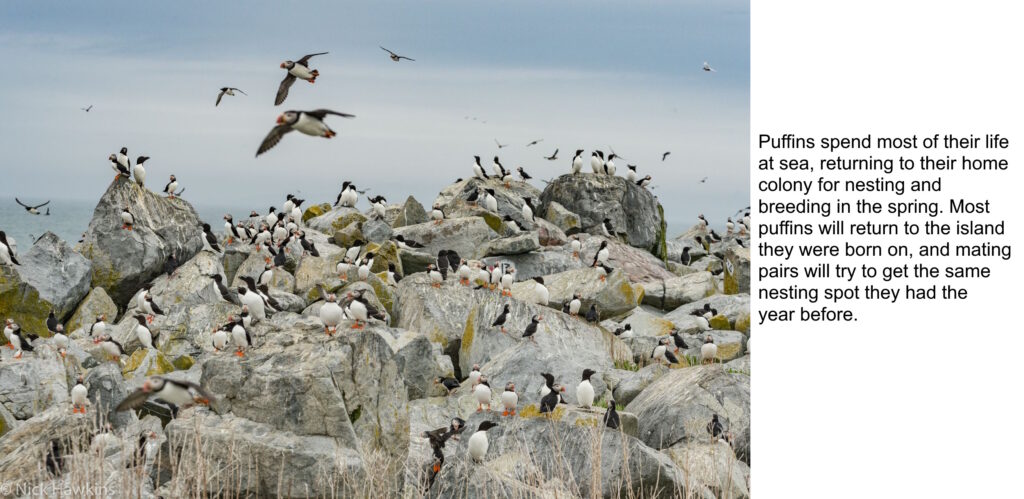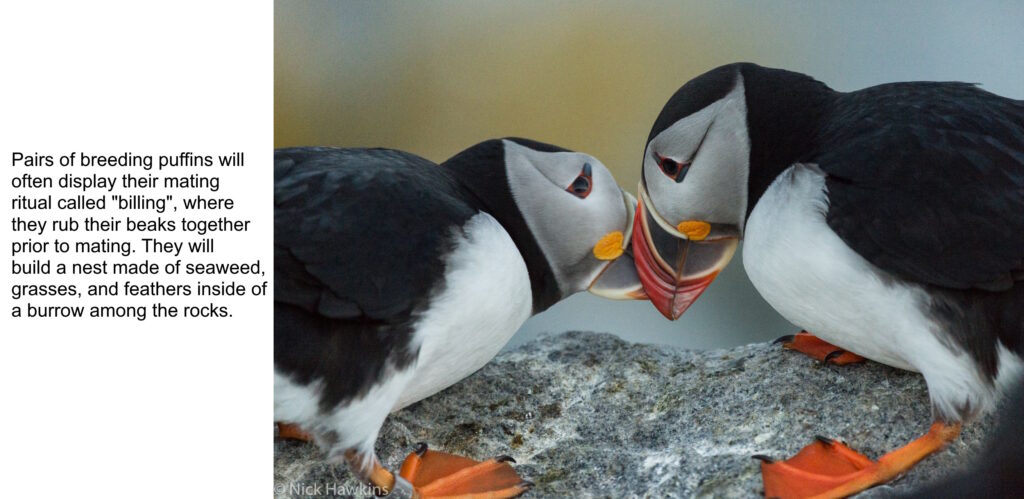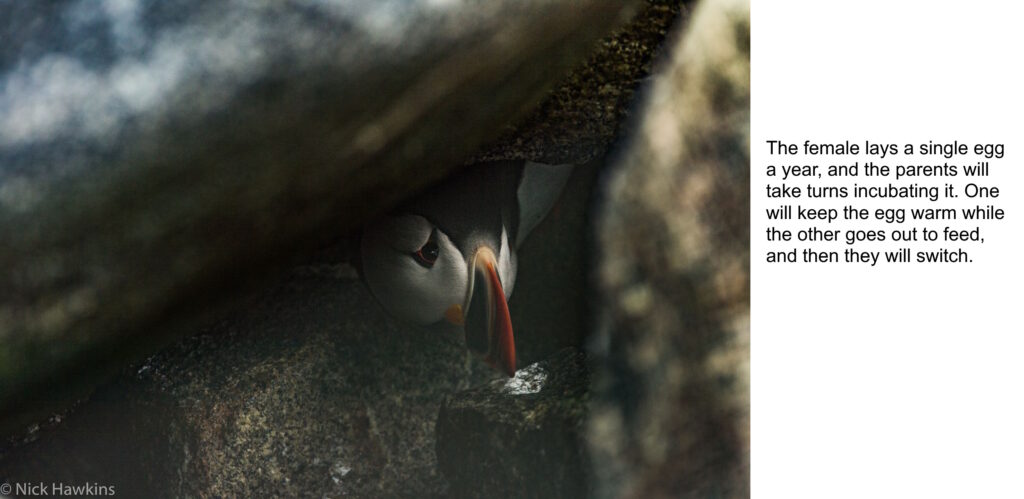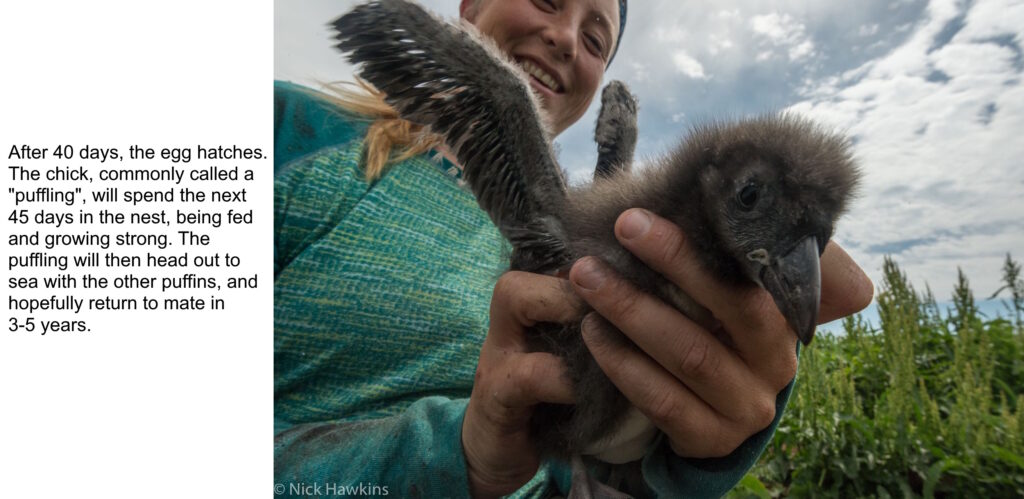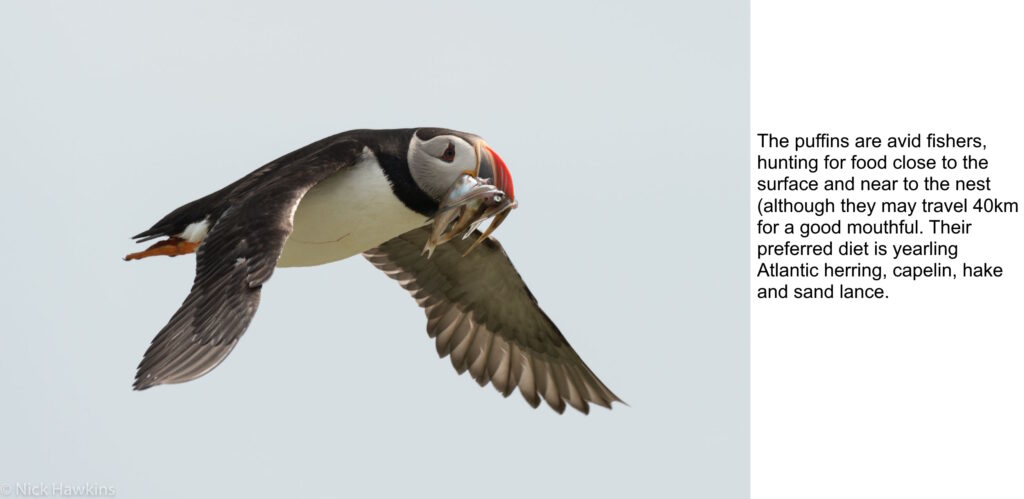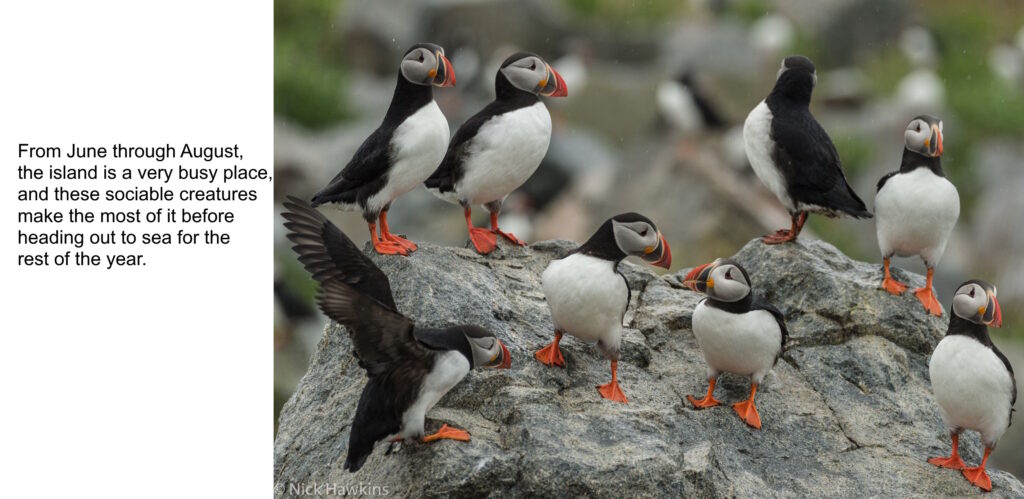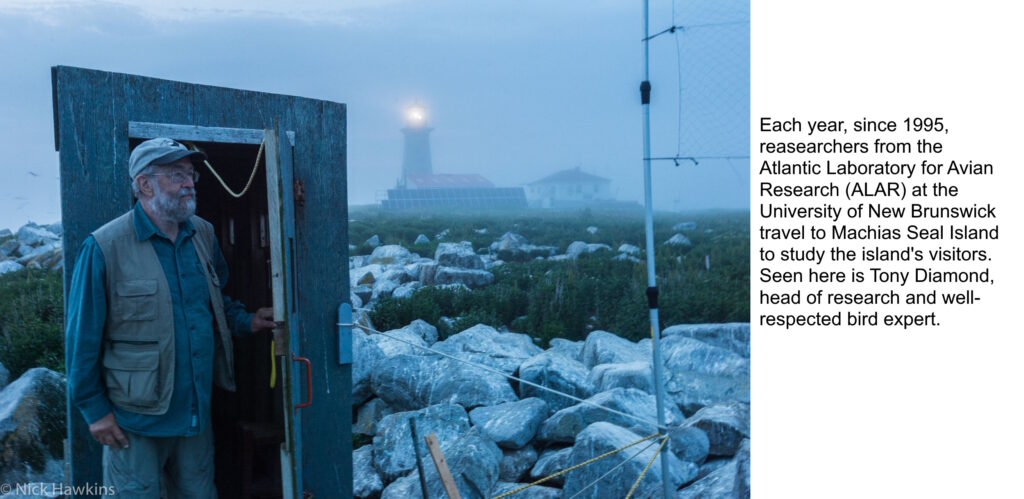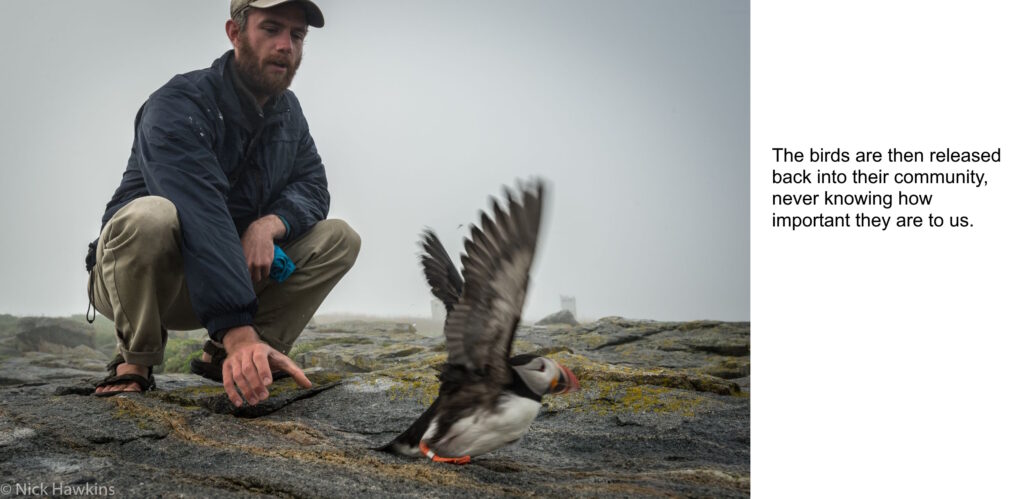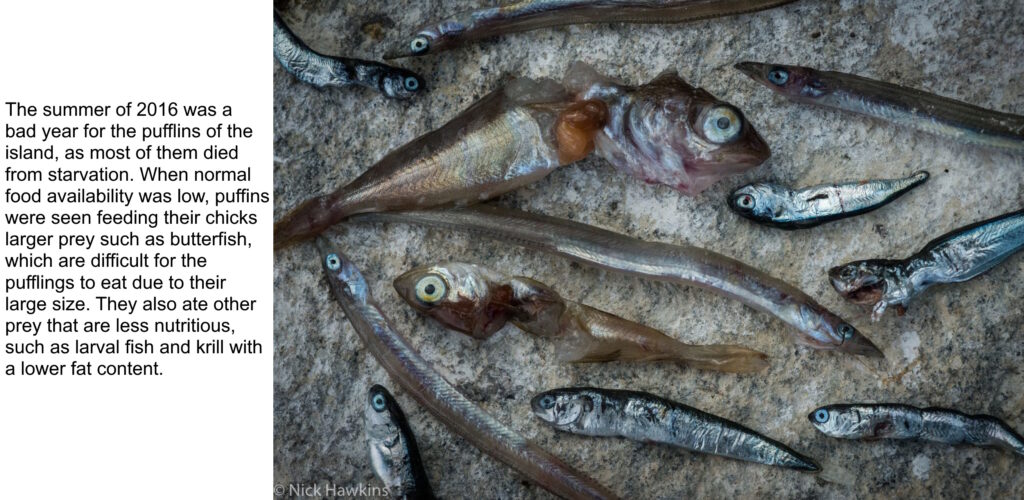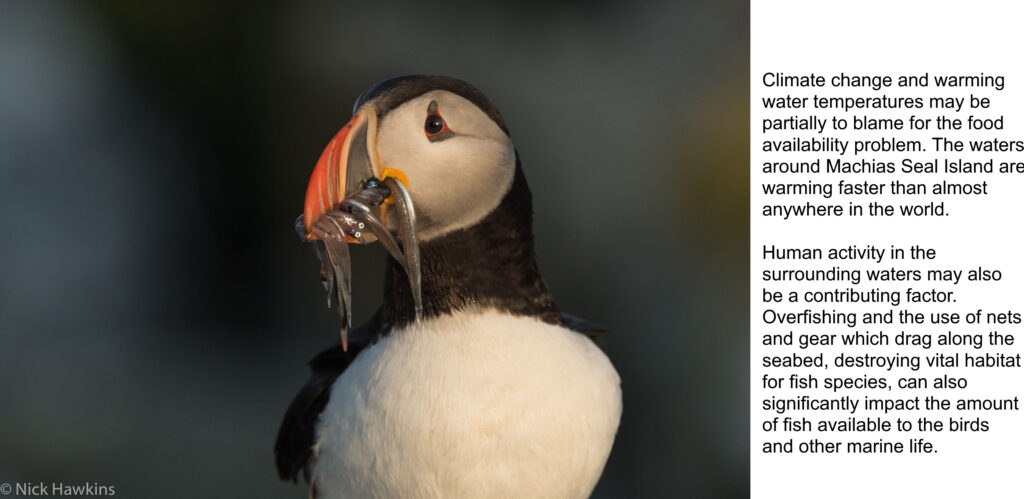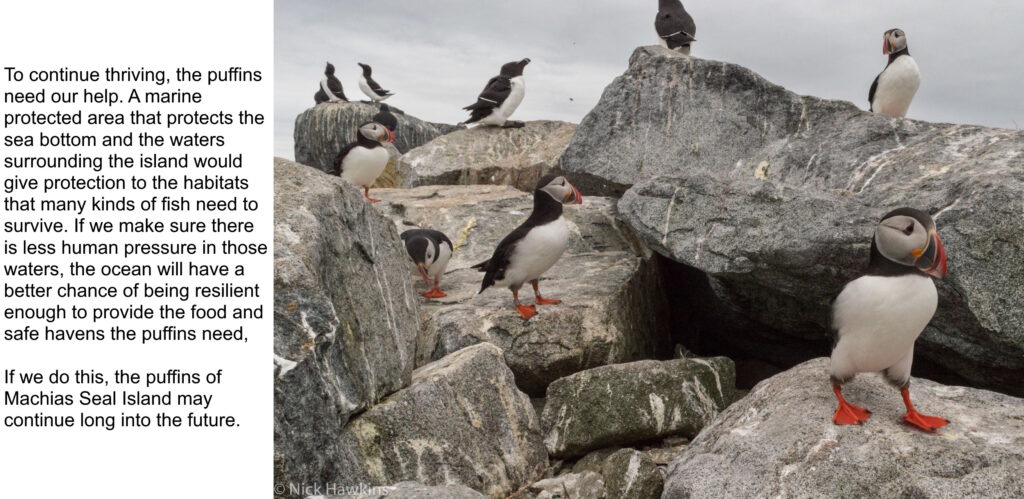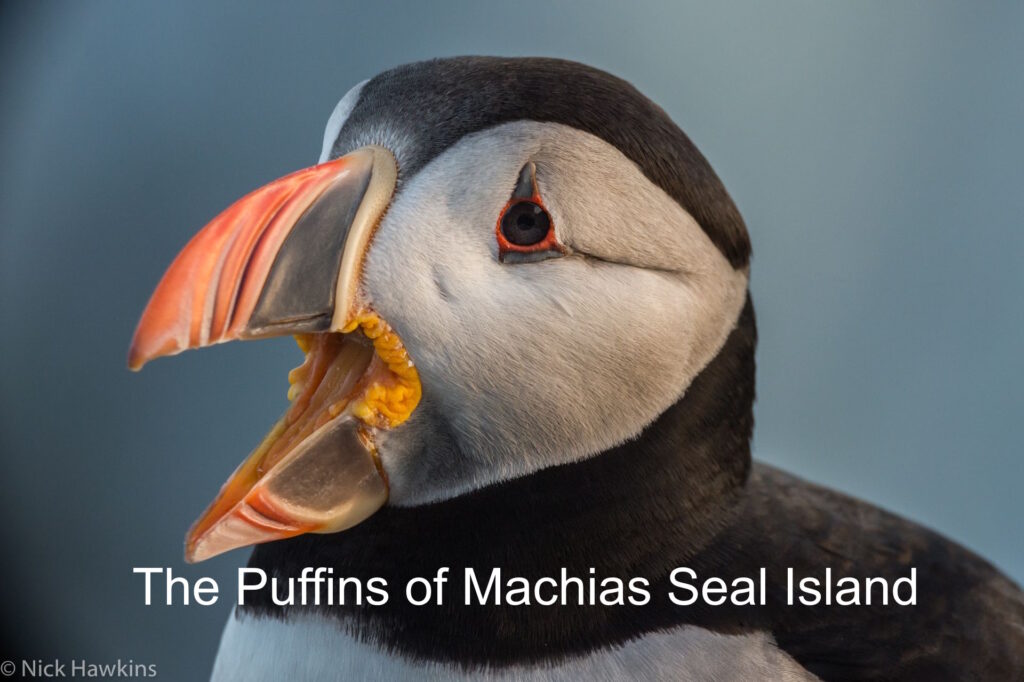
Marine protected areas (MPAs) are an important conservation tool for conserving marine life. By setting aside areas where the seabed remains undisturbed, we can increase the chance for fish to thrive, and for the species that rely on those fish to continue to enrich our lives and our world. To illustrate this point, we would like you to meet … the puffins of Machias Seal Island.
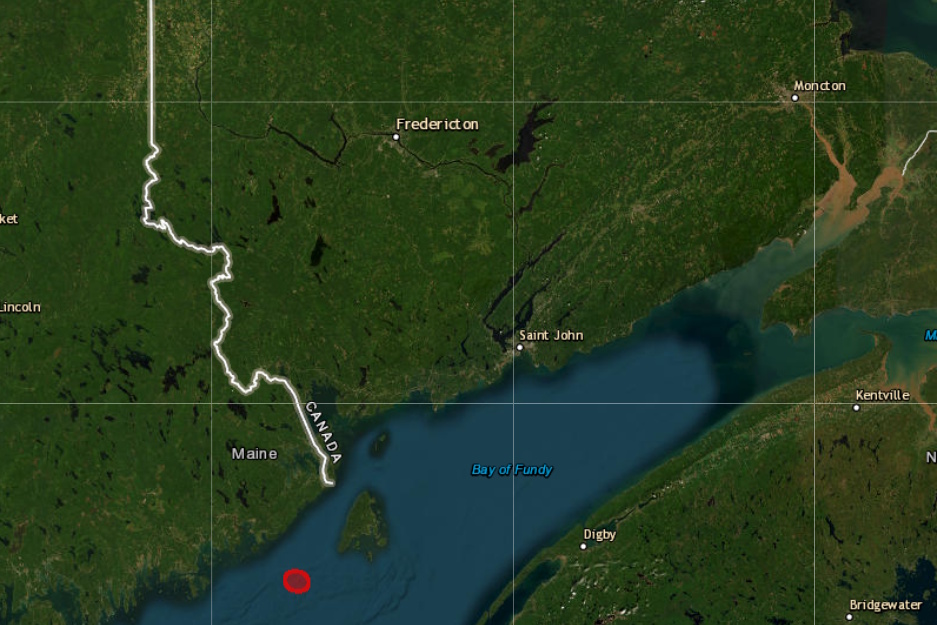
Machias Seal Island is a small, uninhabited island in the Bay of Fundy, located 20 km southwest of Grand Manan Island, New Brunswick. While only 8 hectares in size (about the size of 8 football fields), it is considered one of the most important seabird colonies in the Bay. It has been designated a migratory bird sanctuary by the Canadian government, which protects the birds and their nests from human activities, making the island itself a safe zone for nesting.
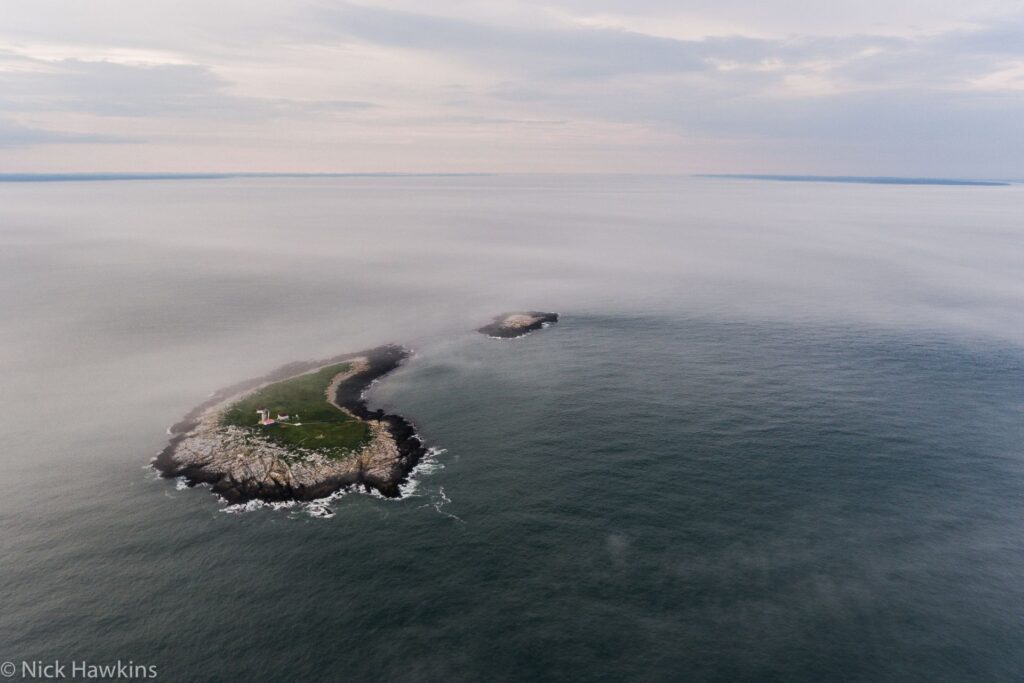 Machias Seal Island is treeless, rocky, and has no history of permanent residents. Ownership of the island has been in dispute (officially) between Canada and the United States for over 2 centuries, but in practice it is considered to be under Canadian jurisdiction. New Brunswick built a lighthouse on the island in 1832, which is staffed by the Canadian Coast Guard. It’s the only remaining staffed lighthouse on Canada’s East coast.
Machias Seal Island is treeless, rocky, and has no history of permanent residents. Ownership of the island has been in dispute (officially) between Canada and the United States for over 2 centuries, but in practice it is considered to be under Canadian jurisdiction. New Brunswick built a lighthouse on the island in 1832, which is staffed by the Canadian Coast Guard. It’s the only remaining staffed lighthouse on Canada’s East coast.
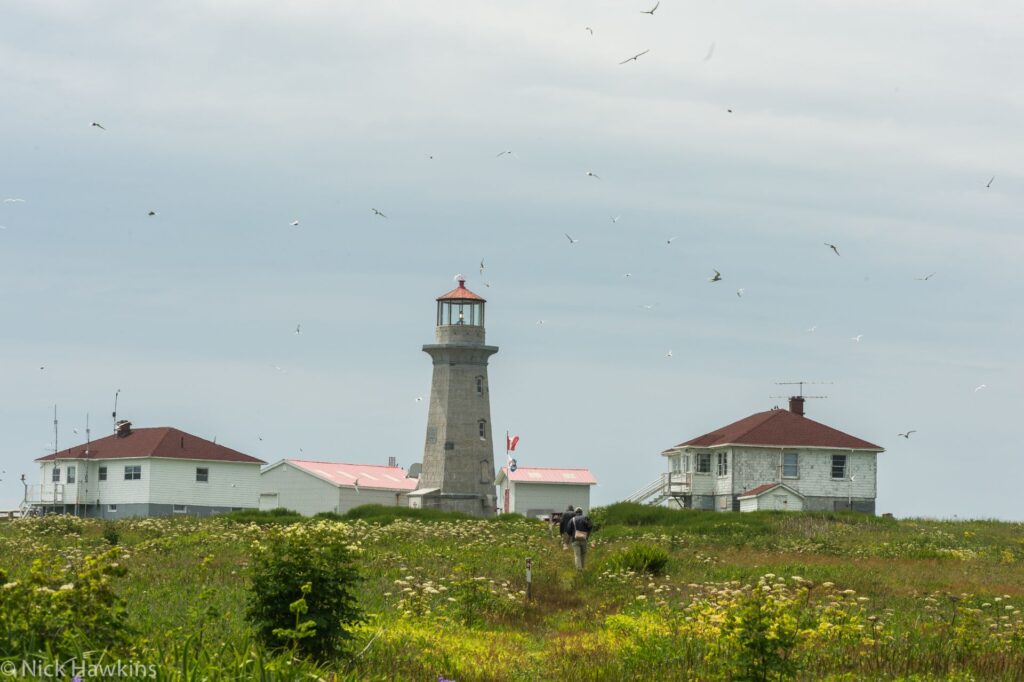 Access to this remote island is limited and managed by the Canadian Wildlife Service (a branch of the Canadian government); 15 visitors from both Canada and the United States are granted access daily from late June until mid August to view the nesting birds. The Canadian Wildlife Service also manages the seabird research being conducted at Machias Seal Island.
Access to this remote island is limited and managed by the Canadian Wildlife Service (a branch of the Canadian government); 15 visitors from both Canada and the United States are granted access daily from late June until mid August to view the nesting birds. The Canadian Wildlife Service also manages the seabird research being conducted at Machias Seal Island.
This page is the result of a joint project between the Canadian Parks and Wilderness Society (New Brunswick and Nova Scotia Chapters) and the Conservation Council of New Brunswick. All photos are by Nick Hawkins. Special thanks to Dr. Tony Diamond and his team for allowing Nick to join them to learn about the work they are doing, and capture these stunning images.
For further information about the organizations involved, follow the links below:
- CPAWS New Brunswick
- CPAWS Nova Scotia
- Conservation Council of New Brunswick
- Atlantic Laboratory of Avian Reseach
- Nick Hawkins, Photographer

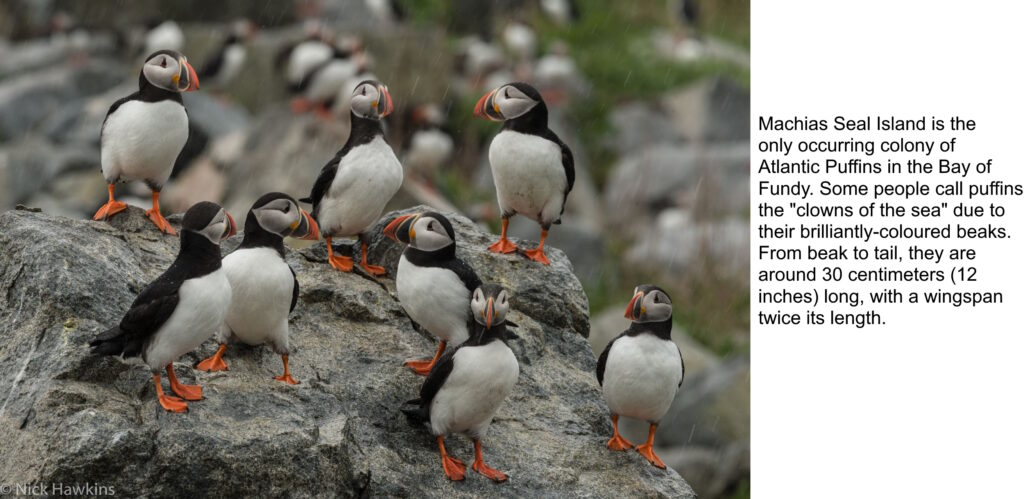
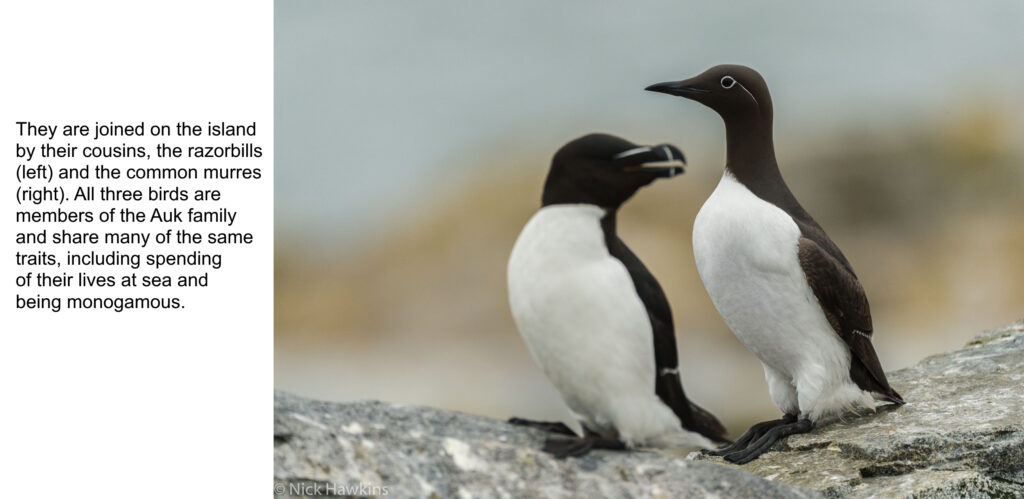
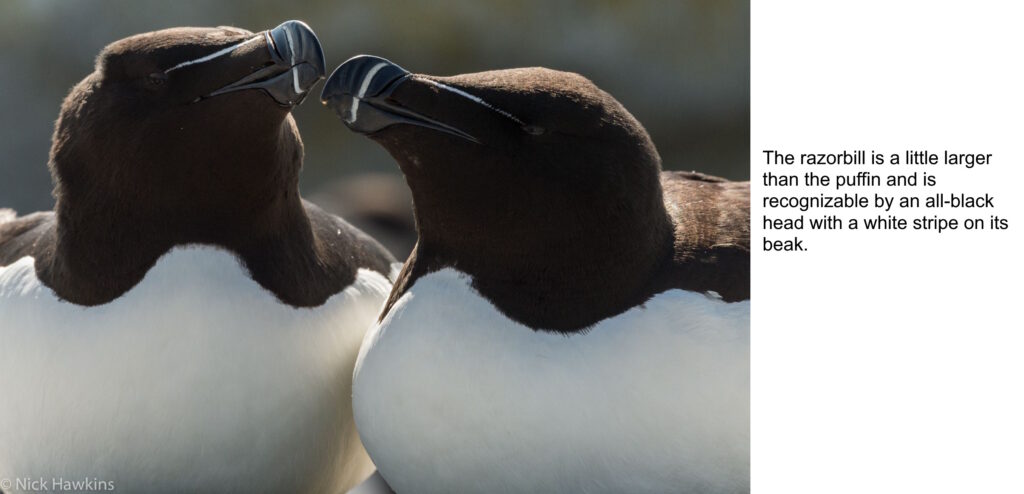
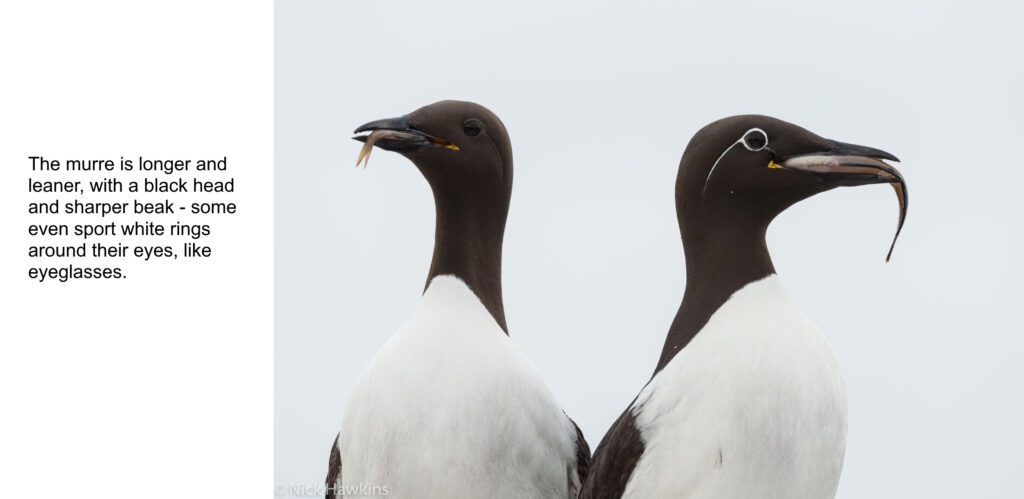
 Other seabirds that live on Machias Seal Island include gannets (on the right) and various types of ducks. The island was also one of the largest breeding areas for Arctic and Common terns (left) until 2006, when approximately 90% of the population abandoned the colony because of long term breeding failure. Terns have been returning in recent years, but not in the numbers of the past.
Other seabirds that live on Machias Seal Island include gannets (on the right) and various types of ducks. The island was also one of the largest breeding areas for Arctic and Common terns (left) until 2006, when approximately 90% of the population abandoned the colony because of long term breeding failure. Terns have been returning in recent years, but not in the numbers of the past. 